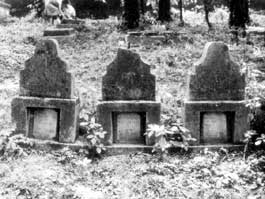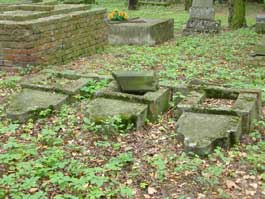 |
 |

|
Cmentarze Project |
|||
The ObjectivesAn inventory of the usually Lutheran or Mennonite cemeteries of ethnic Germans in Poland is not only of interest for people who do genealogical research. The cemeteries, the remaining farm buildings and the still recognizable special structure of the landscape along the Vistula, created by hundreds of years of specialized farming, complement each other to form monuments of the so called Hollaender Colonization in Poland. These monuments of the once strongly developed colonist tradition in Poland form a firm evidence for the multicultural Polish history. They also represent part of the few preserved signs of colonization in Europe. Within the usually densely populated Europe colonization developed a special form which had been very different from the colonization on other continents. Colonization in Europe happened either as settlement in areas that were depopulated by war or as settlement in areas that seemed to be uninhabitable because of their environmental conditions. The Hollaender Colonization in Poland is characterized by the second kind of colonization. In this capacity the evidence of the Hollaender Colonization in Poland and therefore also the old cemeteries are components of a shared European Heritage which deserves to be brought to the attention of a broader audience. |
|||
The Initial SituationMany of the villages with ethnic German inhabitants had their own cemeteries. The areas of the cemeteries were often donations of one of the better off local farmers to the church community. The cemeteries sometimes even seemed to be a kind of status symbol for the inhabitants of these villages. For this reason there are much more of these cemeteries as would be expected from the number of village inhabitants. For historical reasons most of the cemeteries have been unattended for the last 60 years. Consequently they are now overgrown and most of the gravestones have disappeared. But this ignorance of the cemeteries also preserved them to a certain degree. In Germany a grave that has not been attended to for 60 years would have vanished completely or would be in reuse. However the oblivion most of these old cemeteries have fallen into is also endangering their existence. "Inexpert" treatment like the usage as garbage dump or waste incineration place destroys the cemeteries and does not meet their character as places of remembrance. Even better preserved places like the cemetery of Płock loose substance by simple aging processes.
A documentation of these cemeteries, their location and their condition seemed to be a desirable objective. Maybe this could be a first step to set up some protection measures for these vulnerable markers of multicultural Polish heritage. By looking for Lutheran and Mennonite cemeteries we came across several other old cemeteries, some of them in an equally sad condition or almost forgotten. So we soon realized that our goal of documenting this heritage can not be limited by a confessional distinction. So we integrated all abandoned cemeteries which we found into our documentational work. |
|||
|
Jutta Dennerlein, April 2008 |
|||

